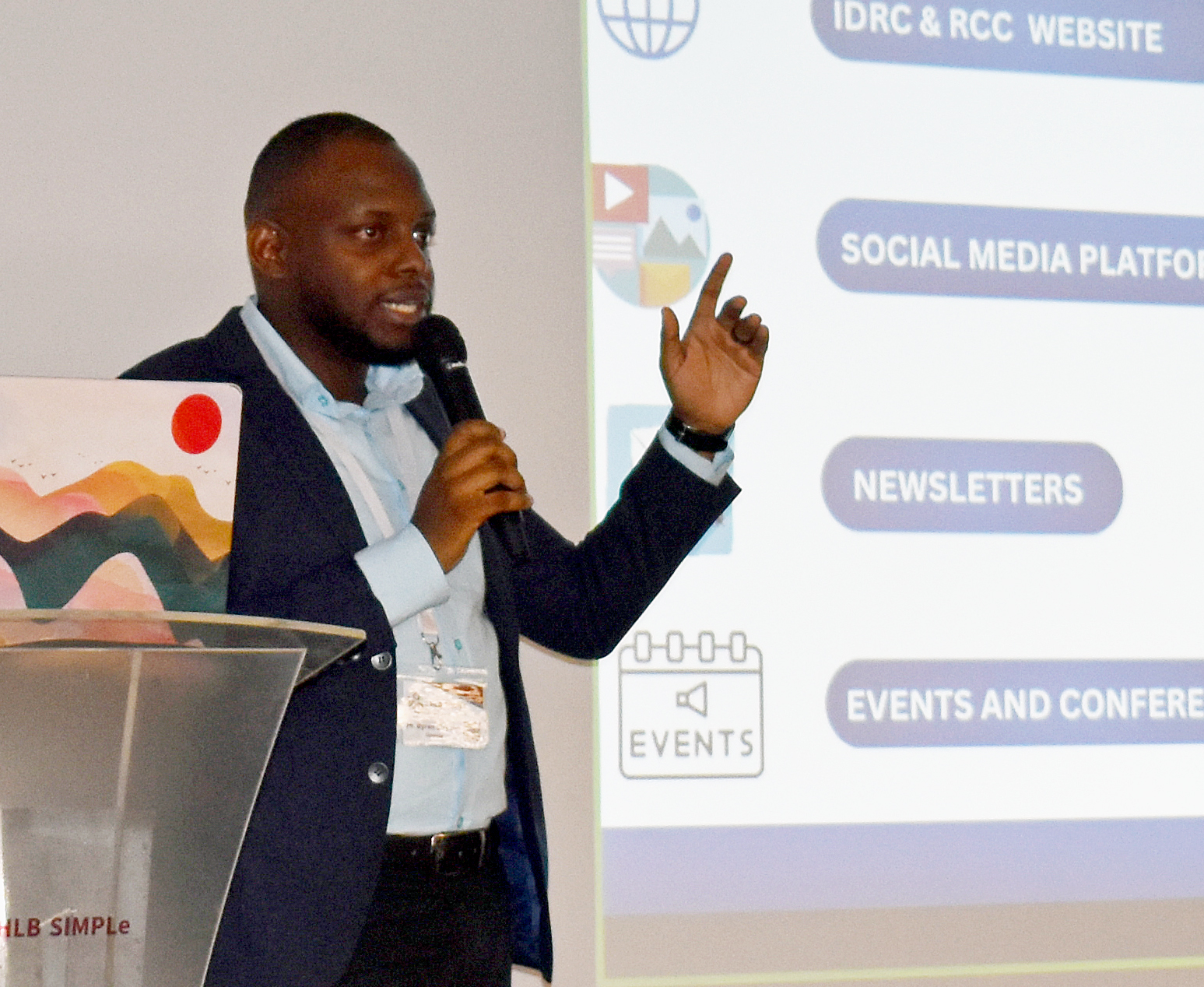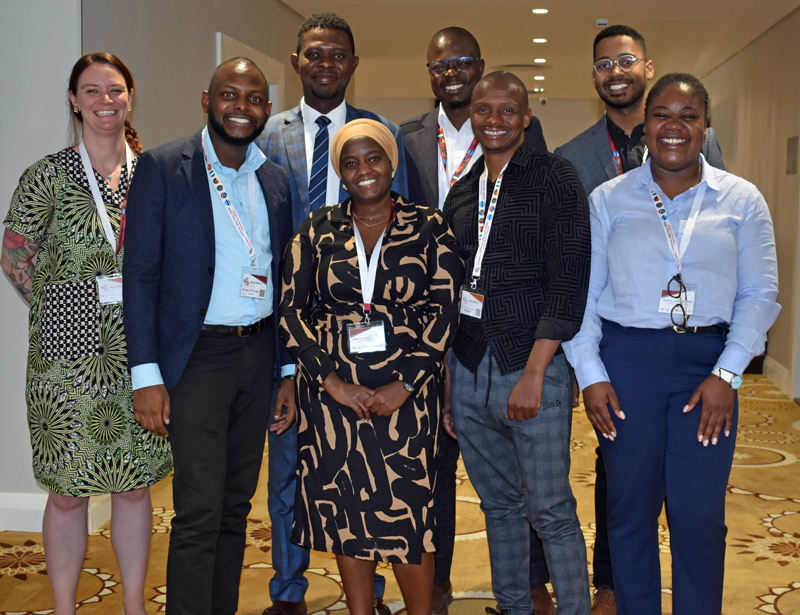Members of the 2024 HLB-SIMPLe Science Communication Cohort. (L-R: April Houston, trainer, Byron Biryaho, Daniel Henry, Eunice Mopane, Brian Banda, Eddie Mogaetsho, Riaze Rafik, and Luanaledi Chunga).
Written by Byron Biryaho (PULESA Uganda), edited by April Houston (RCC)
In the world of science communication, bridging the gap between groundbreaking research and public understanding is essential. Last year, I had the privilege of contributing to this mission by producing a compelling documentary about the PULESA Uganda project as part of my participation in the HLB-SIMPLe Science Communication (SciComm) Cohort.
The SciComm Cohort program was a transformative experience. Through the expert guidance of April Houston, HLB-SIMPLe communications director, we learned and honed critical communication skills, including crafting compelling narratives, delivering effective presentations, simplifying complex scientific concepts, and tailoring messages for diverse audiences. April emphasized the power of storytelling, and provided practical tools and feedback, whch equipped me to translate research into impactful communication products. Her encouragement to think creatively and connect emotionally with audiences has left an indelible mark on our professional growth, inspiring us to use science communication as a bridge between research and real-world change.
My capstone project aimed to highlight the PULESA Uganda project’s remarkable efforts to integrate care for HIV and non-communicable diseases (NCDs) in rural health centers. These initiatives are transforming healthcare delivery, making services more accessible to underserved populations. My goal was to craft a story that not only informed but also inspired stakeholders, health workers, and the broader community.
The documentary focused on Nakawuka Health Center III, one of the project’s pivotal sites. By capturing interviews with health workers and clients, the film highlighted the real-world impact of integrated care. A health worker shared how the project’s training enabled them to manage complex cases more effectively, while a client gave a heartfelt testimony about how receiving holistic care under one roof improved their quality of life. These stories brought the data to life, painting a vivid picture of progress and hope.
Creating this documentary was an enriching journey that required deep engagement with stakeholders, meticulous planning, and creative execution. From scripting to filming, every step was an opportunity to translate complex information into relatable narratives. This experience reinforced the power of visual storytelling in making research accessible and engaging to diverse audiences.
One of the most exciting moments of this journey was presenting my capstone project at the HLB-SIMPLe Alliance Annual Meeting in Botswana. Standing before an audience of esteemed researchers and practitioners, alongside my fellow cohort members, I shared the process, insights, and outcomes of the documentary.
Reflecting on this journey, I am grateful for the opportunity to contribute to the broader objectives of the HLB-SIMPLe Alliance. The support and mentorship provided through the SciComm Cohort program were instrumental in refining my communication skills and ensuring the project’s success.
I am proud to have been part of this experience and look forward to continuing this work with the HLB-SIMPLe Alliance. Together, we can amplify voices, share stories, and build a future where integrated care is the norm, not the exception.
Watch Byron’s documentary on YouTube.


